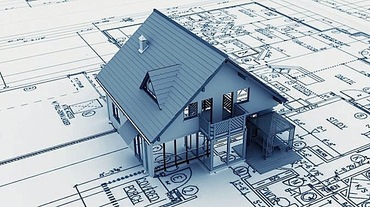
Homes can become havens as we age if they are designed ( and remodeled ) with the future in mind. In a recent article by Katie Marks, she provides lots of good information for the planning and design of a home to make it a home and a haven.
" As our bodies get old, our abilities definitely start changing with them. Bending over gets a little harder, it's tougher to grip things, our eyes aren't as sharp as they used to be, and we have trouble getting around. It's an inevitable consequence of aging, but it can be not very much fun, especially when you're living in a home designed for a younger and more active version of you.
The universal design movement is looking to change that by creating interior design and architecture that are suitable for all kinds of people in all stages of life. A few simple changes can make a huge difference; for example, lowering switches to make them accessible to wheelchair users and children while still easy to reach for ambulatory people. Under universal design, the idea is that you should be able to live with dignity in your home as you age, without having to move because steep stairs, cumbersome kitchens, and other problems make it impossible for you to live comfortably.
One area where universal design can be especially important is in the kitchen, both because it's a room that gets used a lot, and because it's a room where people tend to be highly active. Counters at the wrong height, taps that are hard to use, confusing layouts, and more can turn a kitchen from the friendly center of a home to a minefield. "
To read the entire article, CLICK HERE
" As our bodies get old, our abilities definitely start changing with them. Bending over gets a little harder, it's tougher to grip things, our eyes aren't as sharp as they used to be, and we have trouble getting around. It's an inevitable consequence of aging, but it can be not very much fun, especially when you're living in a home designed for a younger and more active version of you.
The universal design movement is looking to change that by creating interior design and architecture that are suitable for all kinds of people in all stages of life. A few simple changes can make a huge difference; for example, lowering switches to make them accessible to wheelchair users and children while still easy to reach for ambulatory people. Under universal design, the idea is that you should be able to live with dignity in your home as you age, without having to move because steep stairs, cumbersome kitchens, and other problems make it impossible for you to live comfortably.
One area where universal design can be especially important is in the kitchen, both because it's a room that gets used a lot, and because it's a room where people tend to be highly active. Counters at the wrong height, taps that are hard to use, confusing layouts, and more can turn a kitchen from the friendly center of a home to a minefield. "
To read the entire article, CLICK HERE

 RSS Feed
RSS Feed